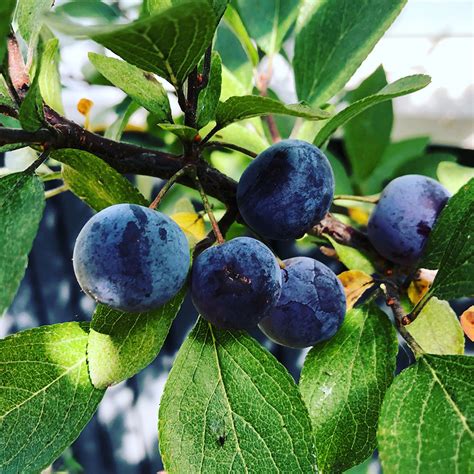How To Grow And Care For A Beach Plum Plant
Have you ever heard of the Beach Plum (Prunus maritima)? If not, you're in for a tasty treat. This wild shrub is native to the northeast coast of North America, and its plump, juicy fruit is perfect for making everything from jams and jellies to wines and vinegars. But there's more to these little guys than just their deliciousness. Let's dive into some of the plant attributes, care tips, and more. Plant Attributes: The Beach Plum is a deciduous shrub that can reach up to 8 feet in height, but typically tops out around 6 feet. It has small, oval-shaped leaves that are a glossy dark green, and it produces beautiful white or pink flowers in the late spring or early summer. The fruit itself is about the size of a cherry and is a deep purple-black color. Plant Care: One of the great things about the Beach Plum is that it's pretty low maintenance. It prefers well-drained soil but can tolerate a range of soil types. It's also drought tolerant and can handle some salt spray, making it a great choice for coastal gardens. While it can handle partial shade, it prefers full sun to produce the most fruit. Pruning: While the Beach Plum is pretty self-sufficient, it can benefit from some light pruning to improve its shape and fruit production. Prune in late winter or early spring before new growth appears. Remove any dead or diseased branches, as well as any branches that are crossing or rubbing against each other. This will help improve air circulation and prevent disease. Propagation: If you're interested in growing your own Beach Plum bushes, you'll be happy to know that they're relatively easy to propagate. You can take hardwood cuttings in the winter or early spring, or you can sow seeds in the fall. Keep in mind that seed-grown plants won't necessarily produce the same fruit as the parent plant, so if you want to ensure a specific flavor or quality, it's best to take cuttings. Potting & Repotting: While Beach Plums can be grown in containers, they really prefer to be in the ground. If you do choose to keep them in a pot, make sure it's large enough to accommodate their root system. You may need to repot every two to three years to prevent the roots from becoming too crowded. Common Pests & Plant Disease: Like most plants, the Beach Plum is susceptible to some pests and diseases. Aphids, spider mites, and plum curculio can all be a problem, so keep an eye out for any signs of infestation. For diseases, watch for powdery mildew, black knot, and fire blight. Keep the area around the plant clean and free of debris to reduce the risk of disease. Common Problems: One of the most common issues with the Beach Plum is birds eating the fruit before you have a chance to harvest it. To prevent this, consider covering the bush with netting or using scare tactics like reflective tape or deterrent balloons. Additionally, make sure the soil is well-drained and not too wet, as this can lead to root rot. There you have it, folks -- everything you need to know about the Beach Plum. Whether you're growing it for its fruit or just as a beautiful addition to your garden, this shrub is sure to delight. So go ahead and give it a try -- your taste buds (and your green thumb) will thank you. 


www.etsy.com - prunus maritima shrub harvested maritimus capemaycountyherald
www.pinterest.com - prunus maritima seeds
wildseedproject.net - plum prunus maritima plums

/Easter-lily-bloom-big-56a586f43df78cf77288b21c.jpg)


Post a Comment for "How To Grow And Care For A Beach Plum Plant"